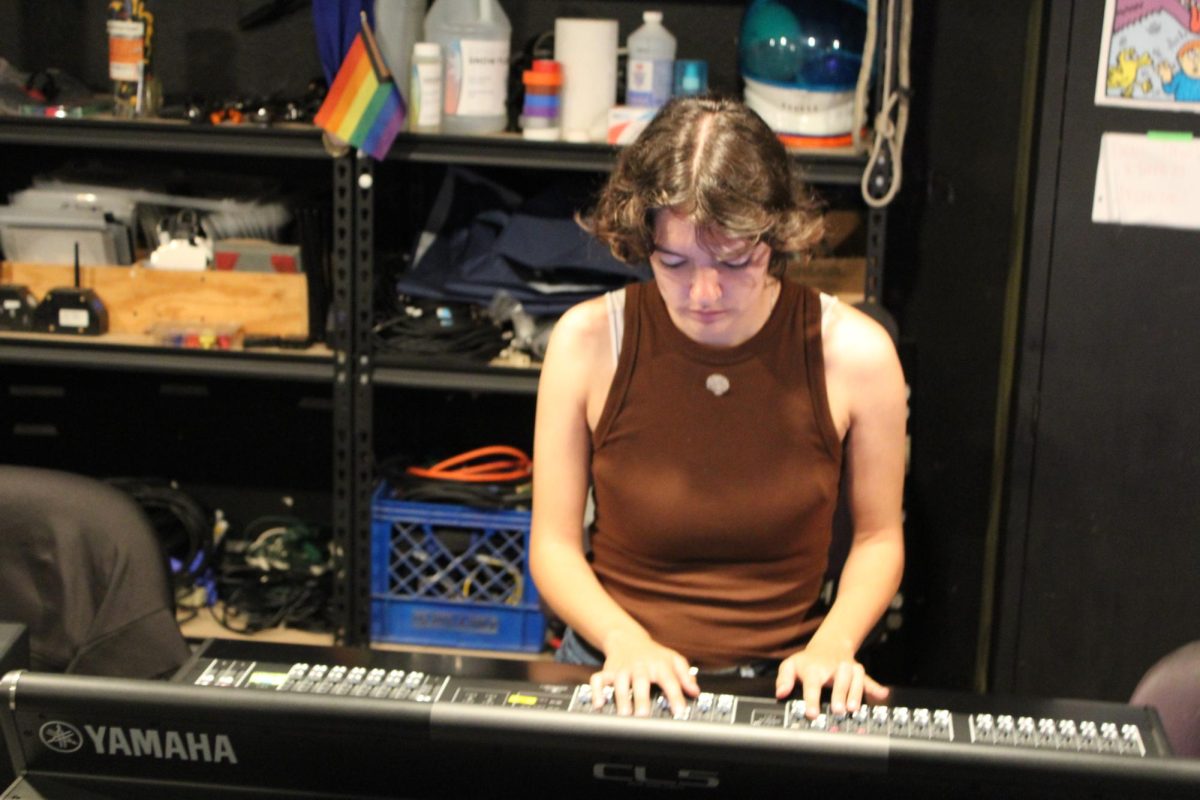For a year, Megan Heflinger (11) wasn’t able to eat properly. No solid foods, because everything she swallowed came right back up. She consistently became weaker in her everyday athletic activities as she lost more weight each month. She began to lose strength in walking, and could barely bend down to tie her shoes.
Heflinger was diagnosed with a condition called achalasia, or cardio spasm, during her freshman year.
Achalasia is when the opening of the esophagus and stomach closes up for certain periods of time called “episodes” that may last anywhere from 10 to 30 hours. During these episodes, Heflinger couldn’t consume anything because her body would automatically regurgitate it.
“When you have achalasia, [the esophagus] pushes the food in random places so the food goes up and down and it stays in your esophagus for a while,” Heflinger said. “In the beginning I was confused with my condition. I became frustrated because once I had an episode, it got in the way of my activities and I longed to feel like everyone else.”
Before she was diagnosed, Heflinger experienced intense chest pain for months. She didn’t know what she was going through and so began to go to doctors to take medical tests. According to Heflinger, achalasia is a rare condition for teenagers to have, which made it more difficult for her to be diagnosed.
That December, Heflinger decided to receive surgery so that she would not have to suffer more episodes. The surgeons poked four holes in her stomach and expanded the lining of her esophagus while taking some parts of her stomach to fold over the esophagus as protection causing her stomach to decrease in size.
After the surgery, Heflinger says she was relieved to see that the pain she expected to suffer was not as bad as she thought it would be. However, the unexpected long recovery time made her lose patience.
Heflinger says she could not walk a lap and had a hard time breathing after the surgery. She expected to recover within two weeks time and return to her normal athletic life but instead was forced to recover for several months.
“I wanted to go back right into [sports] right away, it was hard processing that I couldn’t do the stuff I used to do,” Heflinger said.
Heflinger’s doctor told her that because they didn’t know how she got achalasia, they could not determine what would happen after the surgery.
Although she experienced side effects from the surgery, Heflinger says she gained motivation by believing that she could recover quickly.
“Being confident made me push myself and with each little success,” Heflinger said.
Heflinger began to practice walking around her room and getting up. Soon, she began to see improvement in her breathing and walking.
Despite still being in pain, Heflinger decided this year to continue ROTC and swim four months after the surgery. Heflinger says she was motivated by her urge to get back into shape and be her past self again, who was able to do over 100 sit ups and swim personal records.
However, with recurring stomach acid, chest pains, and weight loss, her athletic goals became harder to achieve. When she didn’t swim a best time, Heflinger says that many times, she regretted having the surgery.
“I thought maybe if I didn’t have the surgery I would be a better athlete,” Heflinger said.
Although she experienced pains, Heflinger kept swimming because it distracted her from the stress of her life.
As the reigning champion for the female athletics section of pushups and situps at state championships in 2015, Heflinger believed that she needed to be there in order to help continue ROTC’s legacy of being state champions five years in a row. According to Heflinger, she felt the worst pain from her incisions after the surgery and says that she broke down with a panic attack.
“I felt mad at myself for having this condition and disappointed that I couldn’t push through but needed to get surgery,” Heflinger said.
However, she was able to place top 10 in the competition after her return.
Aside from the drawbacks of her surgery, Heflinger regained weight and is now able to eat more easily this year. Since there are no episodes anymore, she deals with pain less frequently and can participate in most activities.
“I would sometimes regret the surgery and get frustrated with myself because I wasn’t the athlete I once was,” Heflinger said. “But now my lifestyle is so much better [after the surgery], and it’s worth not being the athlete I once was.”



